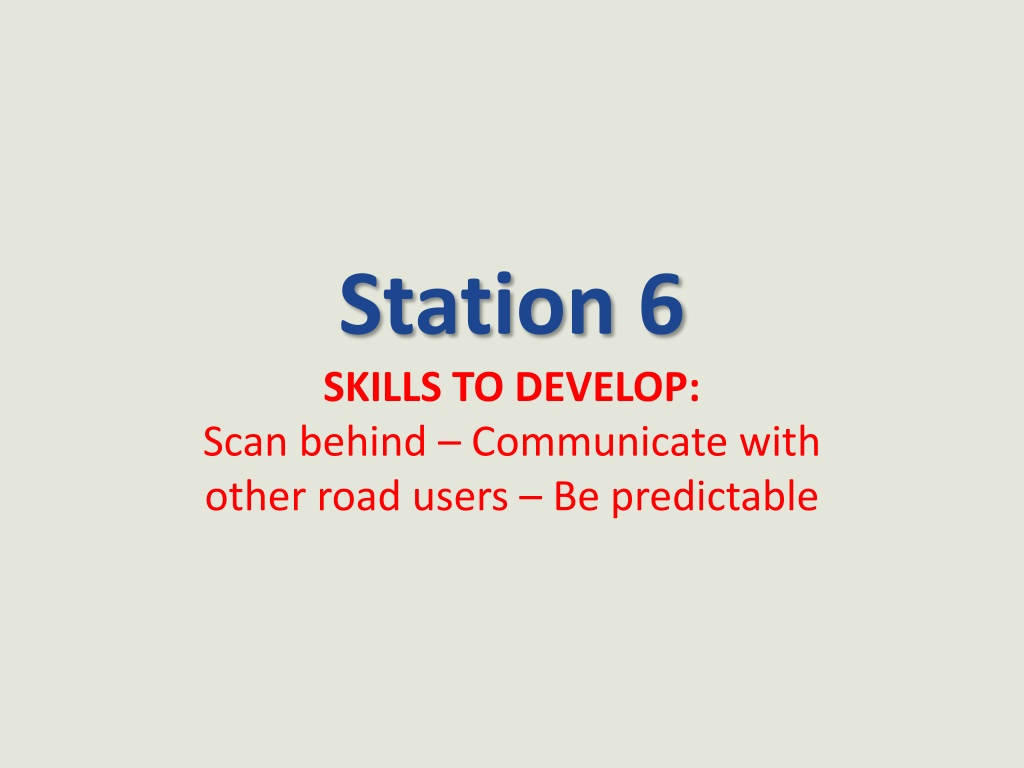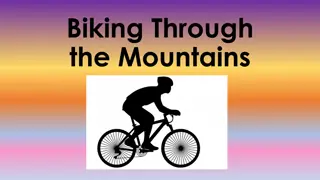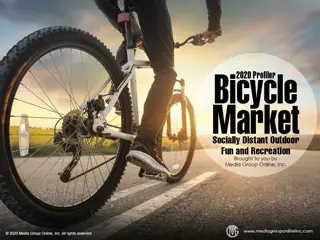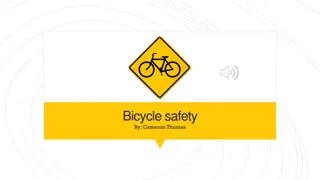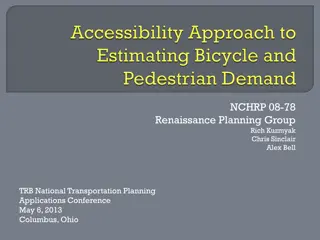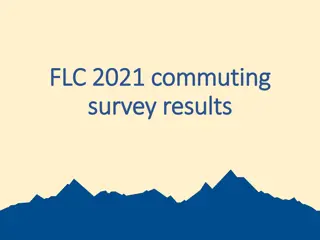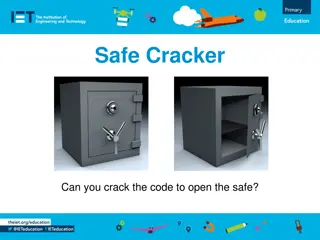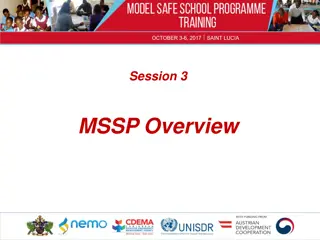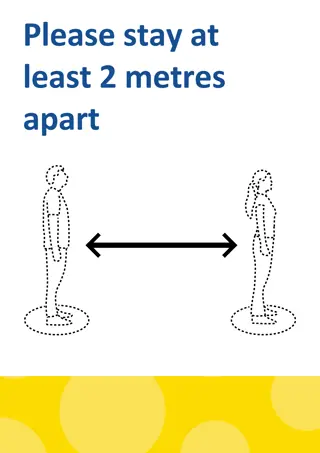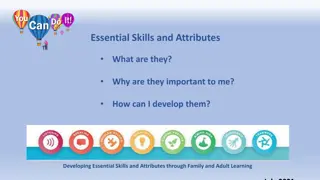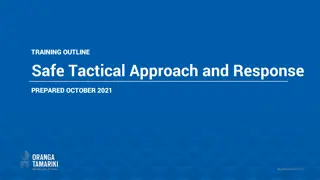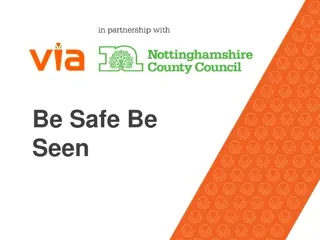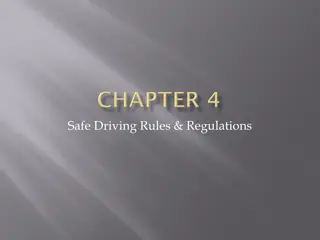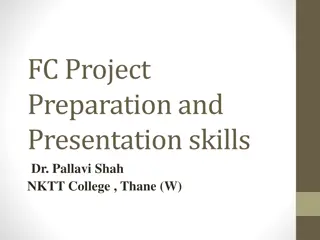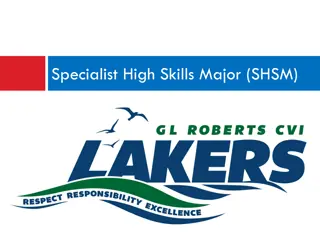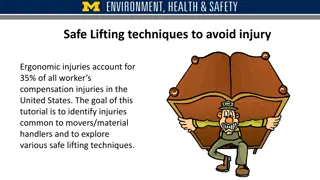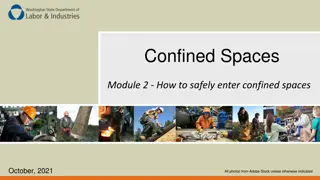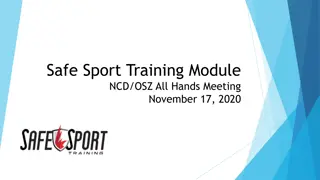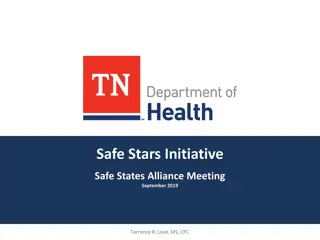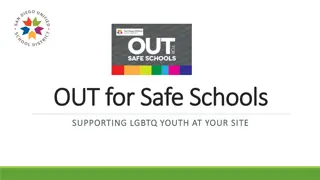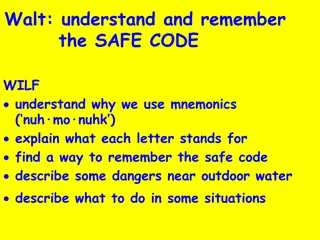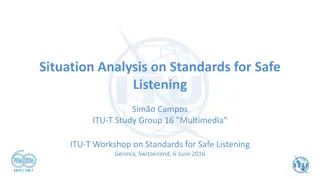Essential Skills for Safe Biking
Develop crucial skills to enhance safety while biking, such as scanning behind, communicating with other road users, being predictable, mastering straight line riding, and balancing to avoid hazards without swerving into traffic. Gain insights on crash avoidance techniques, interaction with drivers, and practical activities for both beginners and advanced bikers. Stay safe on the road by following these valuable tips and guidelines.
Download Presentation

Please find below an Image/Link to download the presentation.
The content on the website is provided AS IS for your information and personal use only. It may not be sold, licensed, or shared on other websites without obtaining consent from the author. Download presentation by click this link. If you encounter any issues during the download, it is possible that the publisher has removed the file from their server.
E N D
Presentation Transcript
Station 6 SKILLS TO DEVELOP: Scan behind Communicate with other road users Be predictable
Most common and severe crash types and skills needed to avoid them Driveway or Midblock Rideout 12% of crashes; 22% incapacitating or fatal Stop Sign/Signal Rideout 17% of crashes; 20% incapacitating or fatal SKILLS TO DEVELOP: Scan behind Communicate with other road users Be predictable Sudden Swerve 7% of crashes; 25% incapacitating or fatal SKILL TO DEVELOP: Straight line riding Wrong way riding is not a separate crash type, but is a contributing factor in many crashes.
Station 6: You Go First skills Crash avoidance:Do not suddenly swerve around obstacles. Control your bicycle pedal predictably in as straight a line as possible. Share the road respectfully. Beginners: Plan ahead. Look as far as you can see at where you are going Before passing, look behind you. Only move over if no cars are coming Signal and look again Stay three feet from any obstacle. Do not move over in front of cars Smile at everyone! Advanced: Look, look and signal, look signal and go if safe Plan ahead. Don t get pinched out Practice judging distance and speed of vehicles Do not ride up the sidewalk and back into the street Thumbs up and thank you wave. Earn the respect of people driving Drivers: Slow down, allow safe space for kids to move over, they often do not look before moving around obstacles. People biking should not have to stop and wait while you pass from behind.
Station 6: You Go First activity Crash avoidance: Before you signal, always look behind into traffic for a safe time to move out of your predictable pattern. Scanning is a very important skill to master. Stand behind the child, let them start pedaling three feet from the curb. Run from behind pretending to be a car. The driver should simulate scenarios, sometimes let them go, sometimes pinch them out, sometimes distracted! It is important to make this course long enough to teach how early kids should begin looking. Make it fun:Kids love this and learn quickly but do not do it consistently. They have trouble in groups and with any distractions. Practice on all rides to become proficient. Drivers: Slow down, wait until it is safe to move over and pass. Be prepared for kids to swerve and turn unpredictably.
Station 7 SKILL TO DEVELOP: Balance Avoid hazards without swerving into traffic practice until reaction is instinctive
Most common and severe crash types and skills needed to avoid them Driveway or Midblock Rideout 12% of crashes; 22% incapacitating or fatal Stop Sign/Signal Rideout 17% of crashes; 20% incapacitating or fatal SKILL TO DEVELOP: Balance skills, avoid hazards while staying out of traffic, practice until reaction is instinctive Sudden Swerve 7% of crashes; 25% incapacitating or fatal SKILL TO DEVELOP: Balance skills, avoid hazards while staying out of traffic, practice until reaction is instinctive Wrong way riding is not a separate crash type, but is a contributing factor in many crashes.
Station 7: Balance skills Tight Turn Bay Crash avoidance:Sudden swerve. Maintaining control of your bicycle and development of instinctive reaction. Beginners: Kids have fun with and learn these skills quickly Smaller bikes help new riders Learning from their mistakes strengthens familiarity with their bike Smile while you pedal! Advanced: Ride the balance activities from both directions Put two riders in the activity at the same time Pedal while looking up, incorporated distractions Ride drills one handed Imagine hazards and reacting to them Drivers: Slow down, wait until it is safe to move over and pass. Allow a minimum of three feet between the right most part of your can and the left-most part of the bicycle. Be prepared for kids to swerve and turn unpredictably.
Station 7: Balance Skills Activity Crash avoidance: Sudden swerve. Maintaining control of your bicycle and development of instinctive reaction. Give lots of positive feedback and encourage new riders. Help them understand that mistakes help them get better, ask questions, walk through improvements. Notice each child s ability and offer additional challenges when they begin mastering a skill. Figure Eights Slow Race Draw several 3-foot-wide and 10-foot-long lanes, with start and finish lines, like a track. Pedal as slowly as possible. Leave your lane or touch the ground and you are out. The last one to cross the finish line wins! Make it fun: Time kids and have contests. Intentionally distract kids, stand close to the edge of the activity area, hold up fingers for them to count, add an obstacle. Drivers: Slow down, wait until it is safe to move over and pass. Prepare for kids to swerve and turn unpredictably, expect the unexpected. Be patient and understanding.
